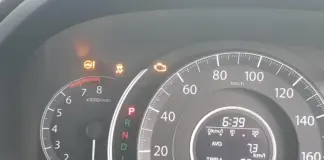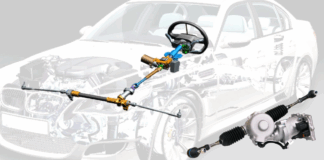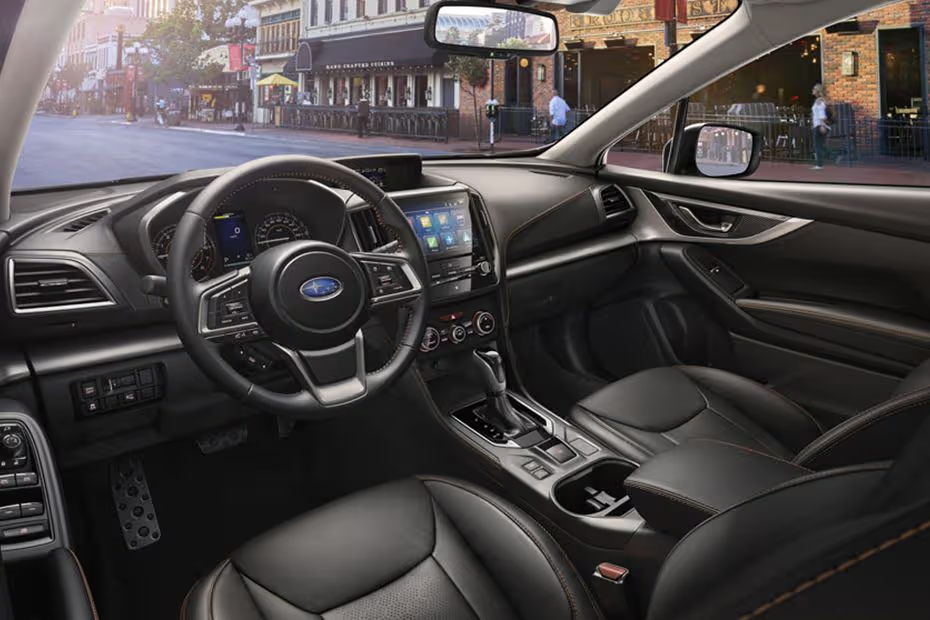Dealing with problems in your Subaru’s electric power steering can be annoying. Many Subaru drivers mention that the steering assistance might unexpectedly stop, making it tough to steer. Often, this can be fixed by pulling over and restarting the vehicle. Whether you’re noticing odd steering feelings or specific dashboard warnings, this guide offers simple insights and fixes for these typical issues.
Understanding Subaru Electric Power Steering
Subaru’s electric power steering has seen major improvements over time. It has shifted from hydraulic setups to more efficient electric designs. Knowing the parts of these systems can help you spot troubles and keep your car running well.
How Power Steering Has Changed in Subaru Cars
Subaru’s steering technology has advanced a lot. Early models used hydraulic power steering, which depended on a pump to create the needed pressure for steering help.
Eventually, Subaru switched to electric power steering (EPS) systems, boosting efficiency and fuel savings. Electric setups, like those in the 2015 Outback, only kick in when you turn the wheel, saving energy compared to always-on hydraulic pumps.
These upgrades have also cut down on maintenance needs. Older hydraulic systems required frequent fluid leak checks. Electric systems, however, reduce these worries by skipping hydraulic fluids altogether.
Parts of Subaru’s Electric Power Steering System
Subaru’s electric power steering system includes several important parts that work together smoothly. These are the electronic control unit (ECU), electric motor, and sensors.
The ECU plays a key role by processing sensor data and managing the electric motor. It adjusts steering help based on road conditions, making driving easier and more pleasant.
Sensors are also critical, tracking the steering wheel angle and car speed. If the EPS light comes on, it might point to battery terminal issues or sensor glitches. Regular upkeep can keep these parts working well.
Typical Problems With Subaru Electric Power Steering
Subaru’s electric power steering can occasionally face issues that impact your drive. Knowing the signs, alerts, and how to diagnose them can help you fix them fast and safely.
Signs of Power Steering Trouble
If your Subaru’s power steering fails, the steering wheel might become hard to move. Without assist, driving becomes tougher, especially at low speeds. A sudden heavy or unresponsive feel suggests the electric system, maybe the steering module, is having trouble.
Some drivers also notice the steering doesn’t center itself properly. This can make the car feel unsteady. Watch for odd noises like clicking or whining when turning, which might signal a steering control module problem.
Warning Signals to Watch For
Keep an eye on your dashboard for warning lights. The power steering light turning on is a common alert that could indicate electrical or mechanical issues.
Blinking lights or ones that stay on might mean loose connections. Check the electrical links to the steering module carefully.
A delay in steering response is another red flag. If you feel this while driving, tackle it right away to stay safe.
Checking Electronic Power Steering Issues
Begin with basics like tire pressure and wheel alignment, which can sometimes seem like steering problems. Then, look at the electrical connections to ensure they’re tight. Loose or rusty wires might cause unpredictable steering.
For a deeper look, use a diagnostic tool to read error codes from the steering control module. A device like the Zurich 13S can help pinpoint specific troubles with the module.
If these steps don’t work, a skilled mechanic might be needed. They can do detailed checks and fixes on the steering modules to keep your car safe.
Steering Issues Specific to Certain Models
Subaru’s electric power steering has shown unique challenges for some models. This part covers problems with the 2014 Subaru Forester and Subaru Outback, giving you key details.
2014 Subaru Forester Steering Problems
The 2014 Subaru Forester has had reports of electric power steering issues. The assist might stop suddenly, making steering hard. You might still steer, but it takes more effort.
A quick fix can be to pull over, turn off the car, and start it again. These issues often stem from steering shaft sensors that sometimes fail. When they do, the steering ability might disappear until the sensors restart. Regular maintenance can help avoid these surprises.
Subaru Outback Steering Difficulties
The Subaru Outback faces its own steering hurdles. Drivers say the electric system feels different from traditional setups. The power only activates with wheel movement, unlike constant-running pumps in older systems. Some notice an odd sensation when turning, where one direction feels easy and the other harder.
As noted in online talks, getting professional help is advised for these issues. If you face these inconsistencies, checking pressure sensors and control modules can address discomfort or safety risks while driving your Outback.
Fixing and Maintaining the System
For Subaru electric power steering troubles, you can try various fixes and upkeep methods. These include resetting the system, swapping out bad parts, and reviewing technical service bulletins (TSBs).
Restarting the Power Steering System
If the power steering isn’t working right, try resetting it. Turning off the engine and restarting can sometimes bring back the assist, much like rebooting a device. Clean and tight battery terminals are also important, as bad connections can affect performance.
A simple reset might fix the problem without bigger repairs. Watch the EPS light on your dashboard, as it might hint at deeper issues needing a closer look.
Swapping Out Faulty Steering Parts
Sometimes, faulty parts in the steering system cause issues. Finding and replacing them is key for safe driving. Check the EPS control module and steering sensors, which can fail and lead to shaky steering.
Diagnosis often needs a scan tool to get error codes. This helps decide which parts to replace, avoiding unnecessary work. Keeping the steering system in good shape is crucial for safety and reliability.
Technical Service Bulletins (TSBs) for Steering
Technical Service Bulletins (TSBs) offer helpful tips for common problems and fixes. Subaru issues TSBs to tackle specific steering issues, including electric power steering. Check if your car is listed in any recent TSBs.
Looking at TSBs can reveal widespread issues and suggested solutions. This info can guide you to fix problems more effectively. Stay updated on the latest bulletins for any needed updates or repairs.
Care Tips for Subaru’s Electric Power Steering
Keeping your Subaru’s electric power steering in good shape can prevent issues and improve your drive. Focus on regular inspections and efficient power supply.
Routine Checks for Steering Parts
Regularly inspect your steering parts to catch problems early. Check the steering wheel for stiffness or odd sounds that might signal trouble. Look for dashboard warning lights like the EPS light, which can warn you before issues worsen.
Focus on the battery terminals. Dirty or loose terminals can affect steering performance. Keep them clean and secure to avoid costly fixes later.
Check steering fluid levels if your model uses it. Most electric systems don’t, but confirm with your manual. A quick look during maintenance can keep steering smooth.
Ensuring Efficient Power for the Steering System
A fully charged battery is vital for good power steering. Since it relies on the car’s electrical system, a healthy battery is essential. Ensure it holds a charge, especially in cold weather when it might weaken.
Occasionally check the alternator and related parts. A bad alternator can cause electrical issues, affecting steering smoothness. Keeping these in good order can prevent sudden steering problems.
Always refer to your owner’s manual for model-specific care tips. This guide offers detailed advice tailored to your car, helping you avoid steering issues.







